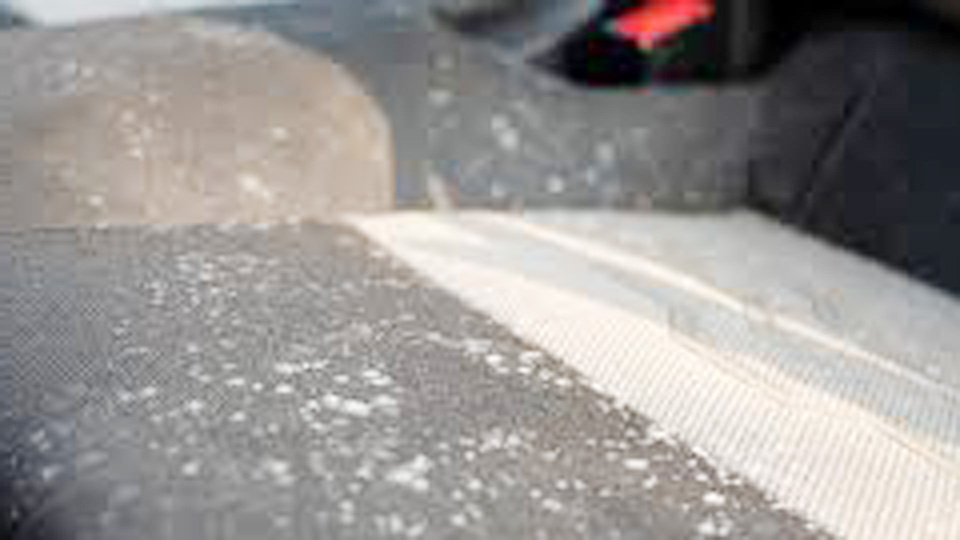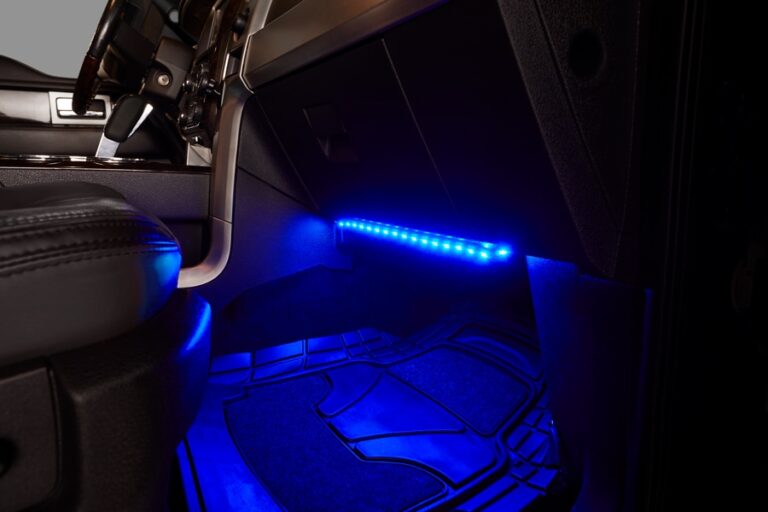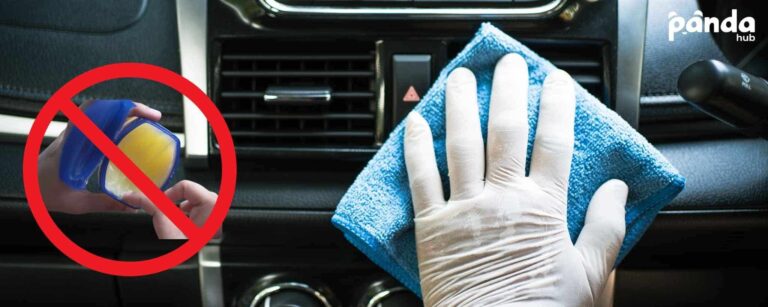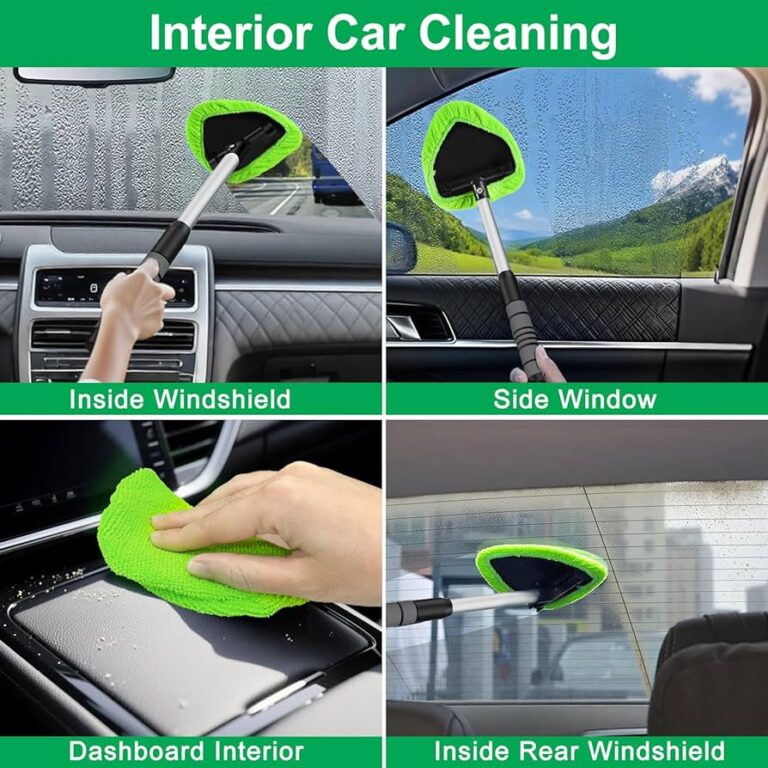As a mechanic with over a decade of wrenching on everything from beat-up Civics to pristine F-150s, I’ve seen my fair share of mouldy car interiors. That musty smell hits you like a wall, and before you know it, you’re staring at fuzzy patches on seats or carpet. If you’re wondering how to stop car interior going mouldy, you’re not alone—it’s a common issue, especially in humid climates or after a spill.
Mould doesn’t just stink; it can ruin your upholstery, harm your health, and tank your car’s resale value. Let’s dive into practical, hands-on solutions to prevent mould, focusing on key components like cabin air filters, weatherstripping, and interior materials, with tips I’ve learned from years in the garage.

Image by carcapsule
Why Mould in Your Car Interior Matters
Mould isn’t just an eyesore—it’s a health hazard and a silent destroyer of your car’s interior. Breathing in mould spores can cause respiratory issues, especially for kids or anyone with allergies. From a mechanic’s perspective, mould signals moisture issues that can corrode wiring, degrade upholstery, and even affect your car’s HVAC system. Fixing it early saves you from costly repairs or a totaled interior. Plus, a mould-free cabin keeps your car reliable, comfortable, and ready to sell without a hit to its value.
What Causes Mould in Car Interiors?
Understanding the Problem
Mould thrives in damp, warm, and poorly ventilated environments—basically, a car interior left unchecked. Spilled coffee, leaky windows, or even a forgotten wet towel can kickstart mould growth. In my shop, I’ve seen mould caused by everything from a cracked sunroof seal to a kid’s juice box soaking into the floorboard. The key culprits? Moisture, organic material (like food or dirt), and lack of airflow.
Common Signs of Mould
Look for these red flags:
- Musty Odor: That telltale damp smell, even with windows open.
- Visible Spots: Green, black, or white fuzzy patches on seats, carpets, or headliners.
- Health Symptoms: Sneezing, itchy eyes, or coughing when you’re in the car.
- Condensation: Persistent fog on windows, signaling trapped moisture.
When to Act
If you notice any of these signs, don’t wait. Mould spreads fast, and delaying can mean replacing entire carpet sections or seats. I once had a customer with a Dodge Ram who ignored a small leak—six months later, the floorboard was a petri dish, and the repair bill hit $1,200.
Key Spare Parts for Preventing Mould
Cabin Air Filter: Your First Line of Defense
What It Is and Does
The cabin air filter cleans the air entering your car’s HVAC system, trapping dust, pollen, and moisture before they reach your interior. A good filter keeps your cabin fresh and reduces humidity that fuels mould growth.
Common Problems
- Clogged Filters: A dirty filter restricts airflow, trapping moisture in the HVAC system. I’ve pulled filters so caked with grime they looked like they’d been through a sandstorm.
- Poor Quality: Cheap filters let moisture and debris sneak through, feeding mould.
- Neglect: Many owners skip filter changes, thinking it’s “optional.” It’s not.
When to Replace
Replace your cabin air filter every 12,000–15,000 miles or once a year, per most US manufacturers (check your owner’s manual). If you live in a humid area like Florida or drive through dusty regions, swap it every 6–8 months. A customer once brought in a Chevy Malibu with a mouldy smell—turns out, the filter hadn’t been changed in three years.
OEM vs Aftermarket
| Option | Pros | Cons | Price Range (USD) |
|---|---|---|---|
| OEM (e.g., Honda, Ford, GM) | Perfect fit, high-quality materials, manufacturer-backed | Expensive, sometimes hard to find for older models | $20–$50 |
| Aftermarket (e.g., Fram, Bosch, WIX) | Affordable, widely available, decent quality | Inconsistent fit, some brands skimp on filtration | $8–$25 |
Stick with OEM for premium vehicles (BMW, Lexus) or if you want guaranteed fitment. For daily drivers like a Toyota Corolla or Ford F-150, a reputable aftermarket brand like Bosch or Fram works fine. Avoid no-name brands on Amazon—they’re often flimsy and let moisture through.
Installation Tips
- Locate the Filter: Usually behind the glovebox or under the hood (check your manual). For a 2018 Honda Civic, pop the glovebox stops and pull it down to access.
- Check for Debris: Vacuum the housing before installing the new filter. I once found leaves and a dead bug in a filter compartment—gross.
- Arrow Direction: Align the airflow arrow (usually marked on the filter) with the direction of air entering the HVAC system.
- Common Mistake: Don’t force the filter in backward—it’ll block airflow and trap moisture.
Maintenance Tip
After replacing, run the AC on high for 10 minutes with windows open to clear out any lingering moisture. Spray a disinfectant like Lysol into the air intake (near the windshield wipers) to kill any mould spores.
Anecdote
I had a guy bring in a 2015 Subaru Outback with a stench like a wet dog. The cabin filter was black with mould, and the evaporator was coated in gunk. A $15 Fram filter and a quick AC cleaning saved him from a $500 dealership bill.
Weatherstripping: Keeping Moisture Out
What It Is and Does
Weatherstripping seals your doors, windows, and trunk, preventing water from sneaking into your interior. Think of it as your car’s raincoat—when it fails, moisture seeps in, feeding mould.
Common Problems
- Cracks or Tears: Old rubber dries out, especially in sunny states like Arizona.
- Loose Seals: Poor installation or wear lets water trickle in.
- Debris Buildup: Dirt in the seals traps moisture, creating a mould haven.
When to Replace
Inspect weatherstripping yearly, especially before rainy seasons. Replace it if you see cracks, feel drafts, or notice water pooling after rain. I’ve seen leaky door seals on a Jeep Wrangler cause a mouldy carpet in just two weeks of heavy rain.
OEM vs Aftermarket
| Option | Pros | Cons | Price Range (USD) |
|---|---|---|---|
| OEM (e.g., Mopar, Toyota) | Exact fit, durable, matches factory specs | Pricey, limited availability for rare models | $50–$150 per door |
| Aftermarket (e.g., Metro Moulded, Precision) | Budget-friendly, decent quality for common models | May not fit perfectly, shorter lifespan | $20–$80 per door |
Go OEM for high-end or older vehicles (e.g., a 2005 Mustang or Audi A4). For budget cars like a Nissan Sentra, aftermarket brands like Metro Moulded are solid if you double-check fitment.
Installation Tips
- Clean the Surface: Use isopropyl alcohol to wipe down the mounting area—dirt ruins adhesion.
- Use Adhesive: Apply 3M weatherstrip adhesive for a secure bond, but don’t overdo it; a thin layer works.
- Test Fit: Dry-fit the strip before gluing to avoid gaps. I once misaligned a seal on a Chevy Tahoe, and water still leaked—lesson learned.
- Common Mistake: Don’t stretch the strip while installing; it’ll warp and fail faster.
Maintenance Tip
Apply silicone spray (like WD-40 Specialist Silicone) to weatherstripping twice a year to keep it pliable. Check for debris in door channels and clean with a soft brush.
Anecdote
A customer with a 2010 Ford Escape had water pooling in the footwell after every rain. The door weatherstripping was shot—cracked and brittle. A $60 OEM seal and 30 minutes of work fixed it, and the mould smell was gone after a deep clean.
Interior Materials: Choosing Mould-Resistant Options
What They Are and Do
Your car’s seats, carpets, and headliners are prime mould targets if they trap moisture. Materials like leather, vinyl, or mould-resistant fabrics can make a difference.
Common Problems
- Cloth Seats: Absorb spills and hold moisture, especially in older cars.
- Carpet: Traps water from wet shoes or leaks, creating a mould breeding ground.
- Headliners: Sagging or stained headliners often hide mould from roof leaks.
When to Replace or Upgrade
Replace carpets or upholstery if mould penetrates deeply—surface cleaning won’t cut it. Consider upgrading to vinyl or leather for easier cleaning. I once worked on a VW Jetta where the owner opted for vinyl seat covers after a mouldy cloth interior—it was a game-changer.
OEM vs Aftermarket
| Option | Pros | Cons | Price Range (USD) |
|---|---|---|---|
| OEM Upholstery | Factory look, perfect fit, durable | Expensive, limited color options | $200–$1,000+ |
| Aftermarket (e.g., Katzkin, Covercraft) | Customizable, affordable, mould-resistant options | Installation can be tricky, quality varies | $100–$500 |
OEM is best for restoring classics or luxury cars. For daily drivers, aftermarket vinyl or leather kits from Katzkin are durable and easy to clean. Avoid cheap seat covers from big-box stores—they trap moisture.
Installation Tips
- Carpet Replacement: Remove seats and center console (use a 10mm socket for most bolts). Vacuum thoroughly and dry the floorpan before installing.
- Seat Covers: Ensure a snug fit to avoid trapping moisture. Use hog ring pliers for a professional install.
- Common Mistake: Don’t skip drying the underlayment—wet foam or padding will mould again.
Maintenance Tip
Use a waterproofing spray like Scotchgard on cloth interiors every 6 months. Vacuum carpets weekly and keep a dehumidifier bag (like DampRid) in the car during humid months.
Anecdote
I helped a buddy restore a 2008 Honda Accord with mouldy carpets from a sunroof leak. We replaced the carpet with an aftermarket kit for $150 and added Scotchgard. Two years later, it’s still mould-free.
Tools and Safety for Mould Prevention
Essential Tools
- Shop Vac: For sucking up water and debris. A 5-gallon Ridgid model ($80) is my go-to.
- Torx and Socket Set: For removing gloveboxes or seats (T20 Torx and 10mm socket cover most cars).
- UV Light: To spot hidden mould (a $20 handheld works).
- Silicone Spray and Adhesive: For weatherstripping maintenance.
- Dehumidifier Bags: DampRid or similar ($10 for a pack).
Safety Tips
- Wear gloves and a mask (N95 or better) when cleaning mould to avoid inhaling spores.
- Work in a well-ventilated area—open all doors and windows.
- Avoid mixing cleaners (e.g., bleach and ammonia) to prevent toxic fumes.
Spotting Fake Parts
Counterfeit cabin filters and weatherstripping are common. Check for:
- Packaging: OEM parts have high-quality boxes with holograms or serial numbers.
- Fitment: Fakes often fit poorly or lack proper markings.
- Price: If a $50 OEM filter is listed for $5, it’s likely fake. Stick to reputable retailers like RockAuto or Advance Auto Parts.
Step-by-Step Guide to Stop Mould Growth
- Identify the Source: Check for leaks (windows, sunroof, doors) using a hose to simulate rain. Inspect weatherstripping and seals.
- Dry the Interior: Use a shop vac to remove standing water. Place dehumidifier bags or a portable dehumidifier ($40–$100) inside for 24 hours.
- Clean Mould: Mix 1:10 white vinegar and water, spray on affected areas, and scrub with a soft brush. Avoid bleach—it can damage upholstery.
- Replace Filters: Swap out the cabin air filter (see tips above). Clean the HVAC intake with disinfectant.
- Seal Leaks: Replace faulty weatherstripping or apply silicone sealant to small gaps.
- Protect Materials: Apply Scotchgard to cloth surfaces and vacuum regularly.
- Maintain Airflow: Run the AC or heater weekly to circulate air, even in winter.
Park with windows cracked (if safe) to improve ventilation, especially in humid areas.
Conclusion
Keeping your car’s interior mould-free boils down to controlling moisture and maintaining key components like cabin air filters, weatherstripping, and upholstery. As a mechanic, I’ve seen how a $15 filter or a quick seal replacement can save thousands in repairs. Choose quality parts—OEM for precision, reputable aftermarket for budget—and don’t skip regular maintenance.
Check your filters yearly, inspect seals before rainy seasons, and keep your interior dry with dehumidifiers or ventilation. Keep a small container of baking soda under the seat—it absorbs odors and moisture like a charm.
FAQ
How Do I Know If My Cabin Air Filter Is Causing Mould?
If your car smells musty or the AC blows weak, stale air, check the filter. A clogged or mouldy filter will look dirty or have black spots. Replace it and clean the HVAC intake to fix the issue.
Can I Clean Mould Myself, or Should I Go to a Professional?
You can clean surface mould with vinegar and a brush, but deep mould in carpets or headliners may need a pro. If the smell persists after cleaning, call a detailer or mechanic to check for hidden leaks.
Are Aftermarket Cabin Filters as Good as OEM?
Reputable aftermarket brands like Bosch or Fram are nearly as good as OEM for most cars, saving you $10–$20. Avoid cheap generics—they often fit poorly and let moisture through.
How Often Should I Check My Weatherstripping?
Inspect weatherstripping every 6 months, especially before winter or rainy seasons. Look for cracks or looseness, and replace if you notice water leaks or drafts.
What’s the Best Way to Dry a Wet Car Interior?
Use a shop vac to remove water, then place dehumidifier bags or a portable dehumidifier inside for 24–48 hours. Run the AC with windows open to circulate dry air.



